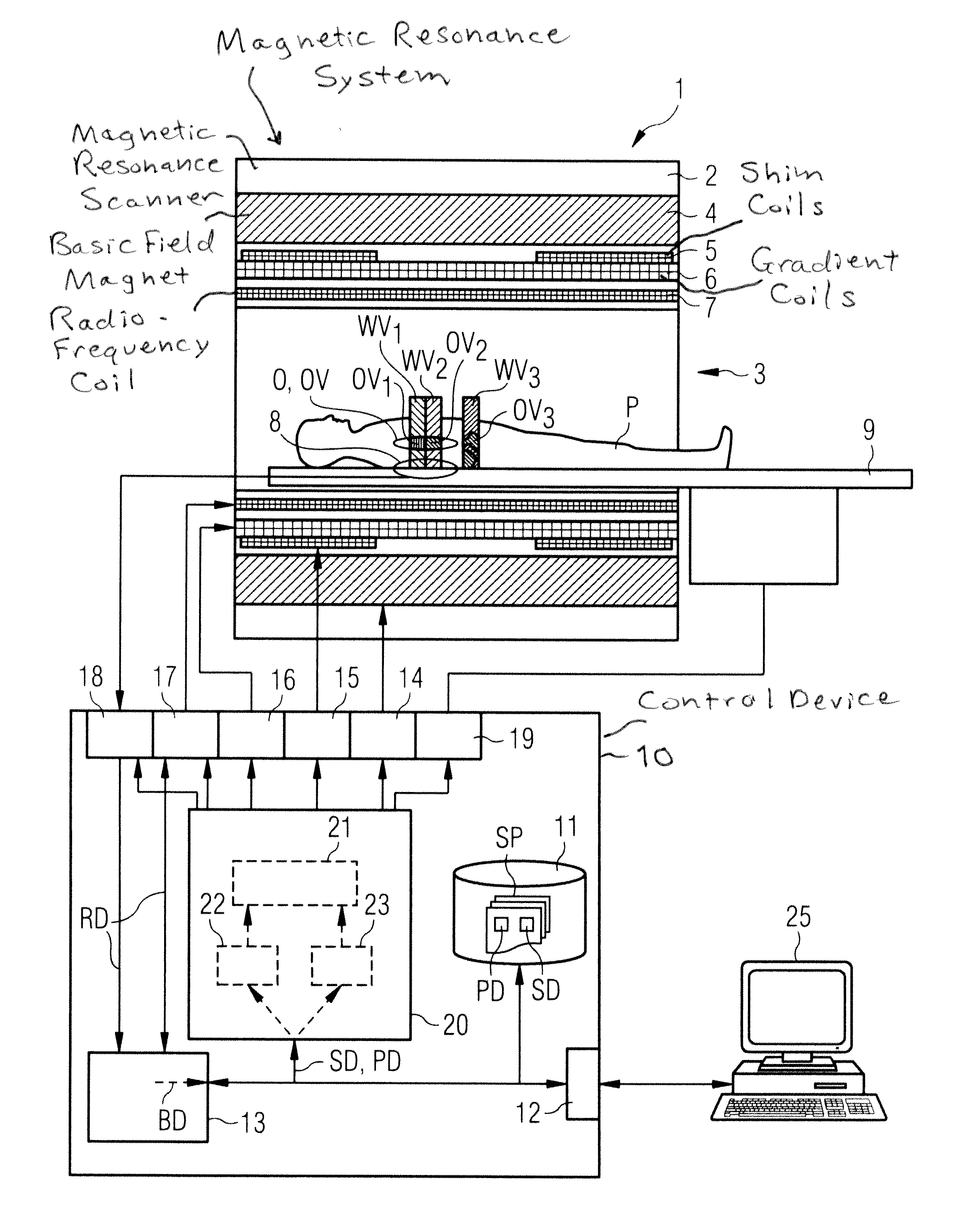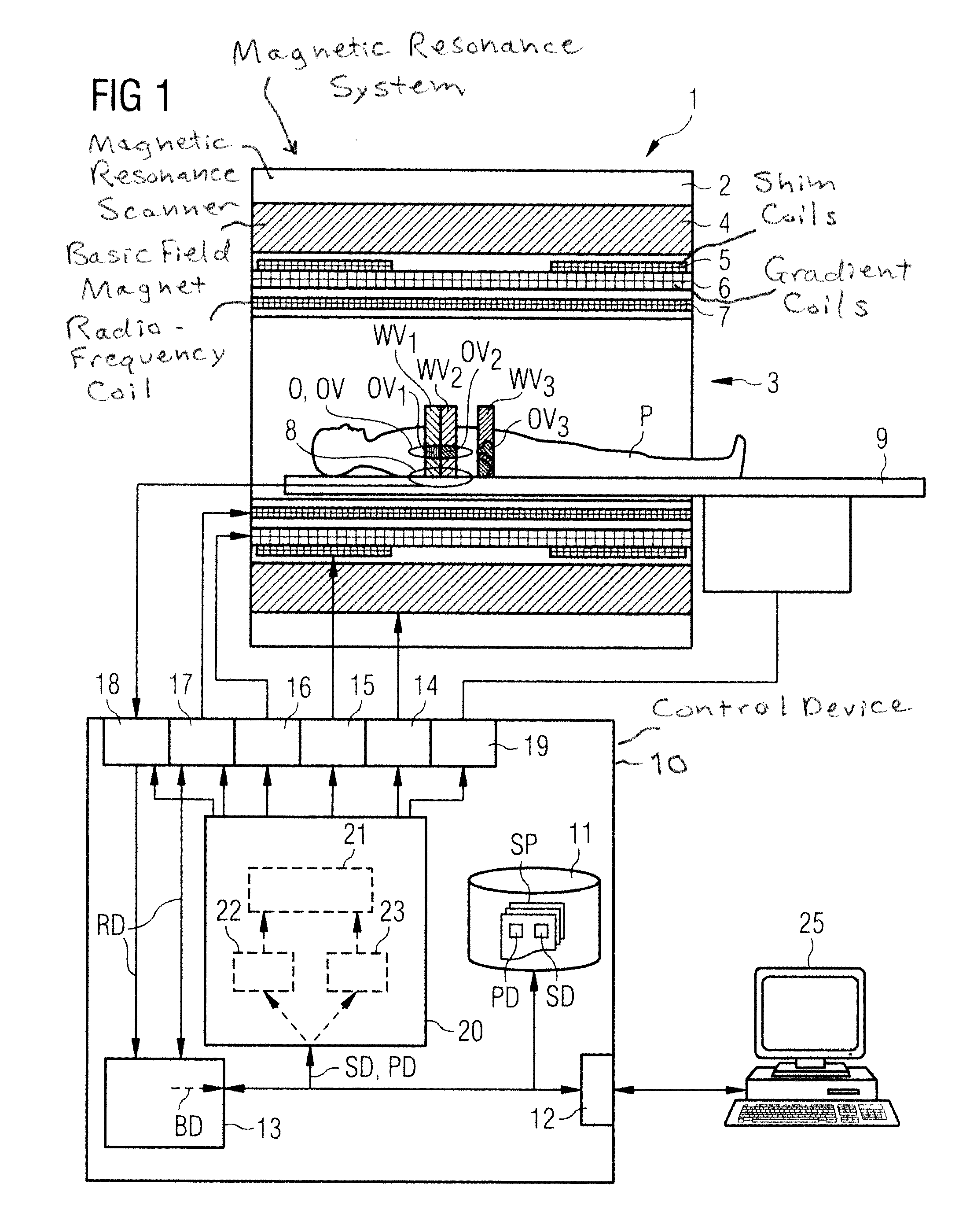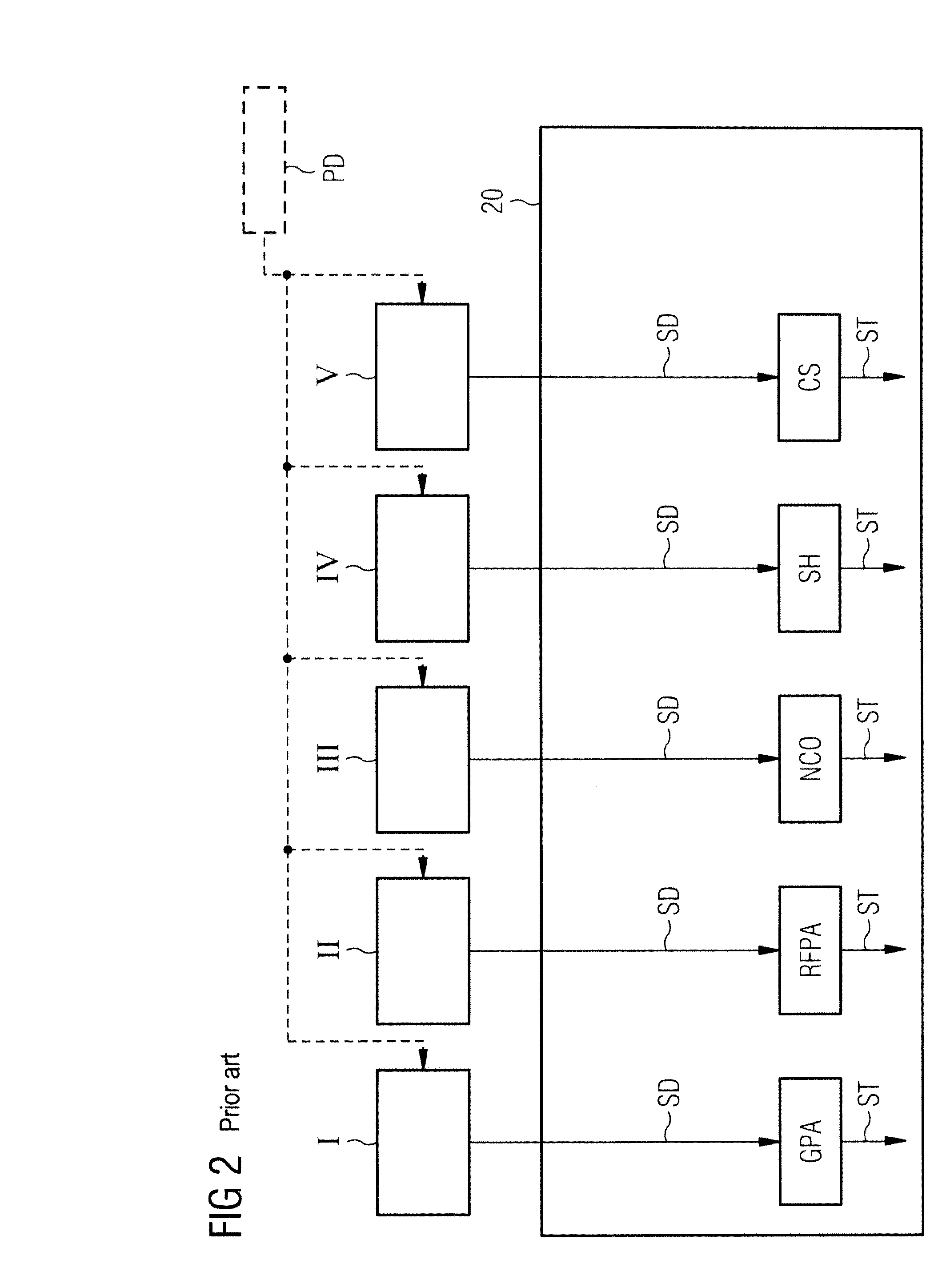Method to operate an imaging system, and imaging system
a technology of imaging system and imaging system, applied in the field of imaging system operation, can solve the problems of excessive time-consuming method, affecting the development of control sequences, and affecting the quality of imaging methods and image data generated therewith
- Summary
- Abstract
- Description
- Claims
- Application Information
AI Technical Summary
Benefits of technology
Problems solved by technology
Method used
Image
Examples
Embodiment Construction
[0033]A magnetic resonance system 1 according to the invention is shown schematically in FIG. 1. It includes the actual magnetic resonance scanner 2 with an examination space 3 or patient tunnel located therein. A bed unit 9 can be driven into this patient tunnel 3 so that, during an examination, a patient P or test subject lying thereupon can be supported at a specific position within the magnetic resonance scanner 2 relative to the magnet system and radio-frequency system arranged in the magnetic resonance scanner 2, or can be moved between different positions during a measurement. At this point it is noted that the precise design of the magnetic resonance scanner 2 is not significant. For example, a cylindrical system with a typical patient tunnel can be used, as well as a C-arm-shaped magnetic resonance apparatus which is open to one side.
[0034]Basic components of the magnetic resonance scanner are a basic field magnet 4, a number of shim coils 5 and magnetic field gradient coil...
PUM
 Login to View More
Login to View More Abstract
Description
Claims
Application Information
 Login to View More
Login to View More - R&D
- Intellectual Property
- Life Sciences
- Materials
- Tech Scout
- Unparalleled Data Quality
- Higher Quality Content
- 60% Fewer Hallucinations
Browse by: Latest US Patents, China's latest patents, Technical Efficacy Thesaurus, Application Domain, Technology Topic, Popular Technical Reports.
© 2025 PatSnap. All rights reserved.Legal|Privacy policy|Modern Slavery Act Transparency Statement|Sitemap|About US| Contact US: help@patsnap.com



